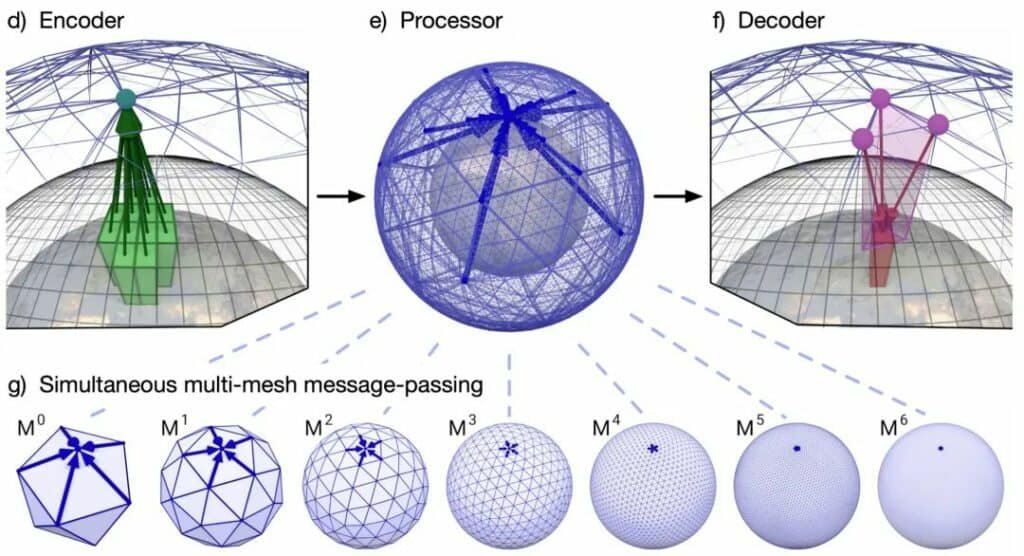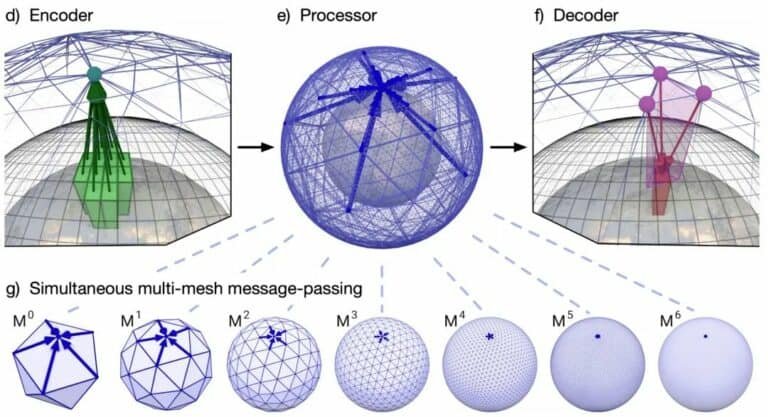
Medium-term weather forecasting plays an important role in travel, agriculture and other industries.
Before planning a trip, we often want to know what the weather will be like in the next week.
However, traditional medium-term weather forecasting models have been facing technical difficulties.
As the volume of data was detected to grow rapidly, the predictive performance of the model failed to improve accordingly.
Recently, a team from DeepMind and Google published a paper building a multi-scale mesh graph neural network (GNN) called GraphCast for medium-term weather forecasting.
Outperforms the best previous machine learning models on 99% of the prediction objectives.
And outperformed HRES, the operational weather forecasting model in use today, on 90% of the forecast objectives.
Previously, they published research on short-term rainfall forecasting back in 2021.
The GraphCast approach is roughly as follows: First, the surface of the Earth is cut into small pieces.
Given the data of the weather at each location at the previous time points (one time point = 6 hours).
It calculates the weather data recursively and step by step for each of the next 40 time points.
The spatial resolution of the prediction reached 0.25° latitude and longitude.
The drawback of traditional convolutional neural networks (CNNs) is that they can only express local associations of data.
The multi-layered grid technology developed by GraphCast allows for the establishment of spatially spanning correlations between any two regions on Earth.
This is more appropriate for weather forecasting.
